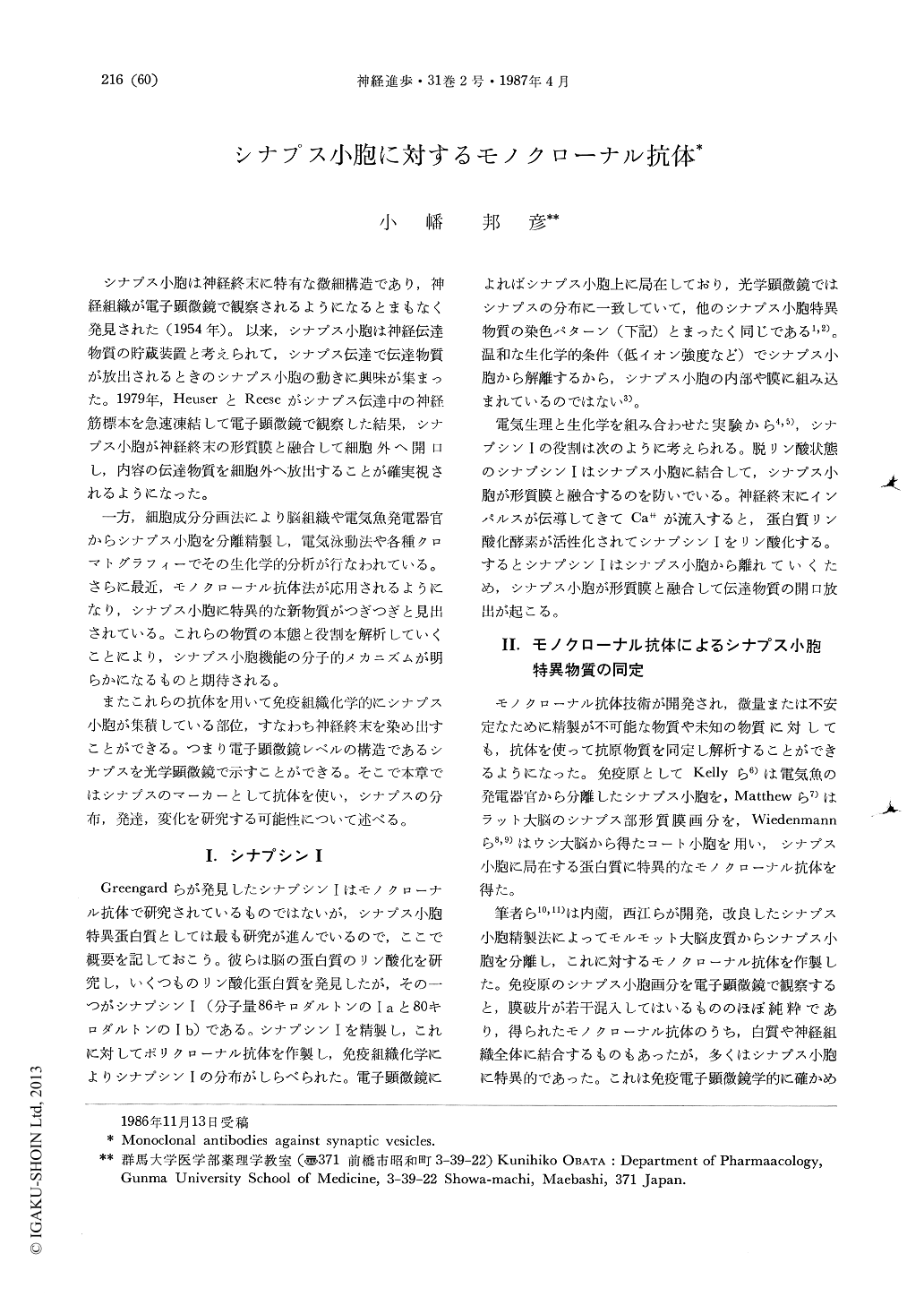Japanese
English
- 有料閲覧
- Abstract 文献概要
- 1ページ目 Look Inside
シナプス小胞は神経終末に特有な微細構造であり,神経組織が電子顕微鏡で観察されるようになるとまもなく発見された(1954年)。以来,シナプス小胞は神経伝達物質の貯蔵装置と考えられて,シナプス伝達で伝達物質が放出されるときのシナプス小胞の動きに興味が集まった。1979年,HeuserとReeseがシナプス伝達中の神経筋標本を急速凍結して電子顕微鏡で観察した結果,シナプス小胞が神経終末の形質膜と融合して細胞外へ開口し,内容の伝達物質を細胞外へ放出することが確実視されるようになった。
一方,細胞成分分画法により脳組織や電気魚発電器官からシナプス小胞を分離精製し,電気泳動法や各種クロマトグラフィーでその生化学的分析が行なわれている。さらに最近,モノクローナル抗体法が応用されるようになり,シナプス小胞に特異的な新物質がつぎつぎと見出されている。これらの物質の本態と役割を解析していくことにより,シナプス小胞機能の分子的メカニズムが明らかになるものと期待される。
Synaptic vesicle fraction was purified from the guinea pig cerebrum using discontinuous sucrose density gradient ultra-centrifugation. Mice were immunized with this vesicle fraction and their splenocytes were fused with myeloma cells to produce hybridoma cells secreting monoclonal anti-bodies (MAbs). Four types of MAbs were ob-tained which specifically bound synaptic vesicle-specific proteins with molecular weights of 65, 38, 36 and 30 kilodaltons, respectively. In immuno-histochemistry and immunoelectron microscopy these MAbs stained synaptic vesicles in most synapses.

Copyright © 1987, Igaku-Shoin Ltd. All rights reserved.


